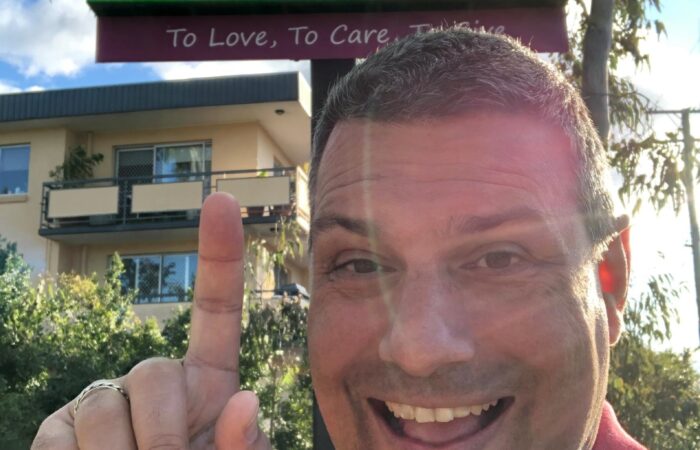Position your Business using a Market Matrix. In Blackboard Fridays Episode 63, Jacob talks about Marketing and Brand Promise. Need this implemented into your business? Talk to the international business advisor who can do exactly that – Contact Jacob, Learn More, or Subscribe for Updates.
Who is Jacob Aldridge, Business Coach?
“The smart and quirky advisor who gets sh!t done in business.”
Since April 2006, I’ve been an international business advisor providing bespoke solutions for privately-owned businesses with 12-96 employees.
At this stage you have proven your business model, but you’re struggling to turn aspirations into day-to-day reality. You are still responsible for all 28 areas of your business, but you don’t have the time or budget to hire 28 different experts.
You need 1 person you can trust who can show you how everything in your business is connected, and which areas to prioritise first.
That’s me.
Learn more here. Or Let’s chat.
Transcript
Happy Friday. If you’re a Blackboard Friday subscriber, then chances are you’re watching this video in your office on a Friday morning. It’s early in the day, not even lunchtime, so I’ve got a question for you: how many pieces of advertising do you think you’ve already seen today?
And even if you’re watching this on our website at a later date, ask yourself the same question. Have a look around your office right now: how many pieces of advertising do you see?
Then start to think about even just a straight journey into work. Every billboard, every bus stop, every taxi, indeed, every car logo that you go past is a company advertising trying to eke the last strain out of the 1970s marketing paradigm. That’s the era when marketing moved from Mad Men to mass adoption, and in a saturated world the purpose of marketing was getting a product in front of your eyeballs, into your head so often that they’re there when you’re ready to make a buying decision.
There’s some seminal work around marketing, advertising, and positioning done by Jack Trout and Al Ries in the 1980s. If you want to go into some of that depth of detail, there’s a book called “Positioning, The Battle for your Mind” which I do recommend – even though it’s now decades old – because things have gotten worse.
At that time, the average person saw an average of 5,000 pieces of advertising every day. Ads are ubiquitous. Even on my website or reading this newsletter, you’ve have this incredibly valuable video and article … and it’s a form of advertising. I want you to remember and invest in my incredibly valuable business coaching services, next time you’re actually serious about planning and executing some smooth growth plans.
Ad Blindness and a Solution
We can’t escape these thousands of messages, so instead we’ve developed forms of ad blindness.
We can now do a Google search and completely ignore the paid advertising at the top.
We can scroll through the web even if we don’t have an ad blocker installed and ignore all of those advertising messages. Which just means that if you’re trying to reach your clients through advertising, it’s getting harder, it’s getting more expensive.
The alternative is finding ways to create more powerful cut-through to help yourself truly stand out in a more efficient way.
Introducing the Positioning Market Matrix
So how do you practically develop a brand strategy that creates cut through? One exercise I love to complete with my clients is “The Market Matrix”.
A well-researched Market Matrix helps you to understand where you and all your competitors sit within your market. By understanding these competing forces, as understood by your target clients, you can see whether you are positioned in a crowded box or you’ve got some clean air, some fresh space, and the opportunity to actually stand out.
Because people are terrible at remembering things.
Seven, Plus or Minus Two
For any given category, most people can only remember seven items (plus or minus two).
If they’re trying to think of the best real estate agent, the highest mountain, the first person they kissed … they might recall the first couple, but actually getting down to 5th, 6th, 10th on that list is not going to happen.
In a world of saturated marketing, you need to stand out or you won’t be recalled.
A Marketing Matrix Case Study
I’m going to use as a case study for explaining how to use the Market Matrix. This was a business my colleagues at businessDEPOT created called #RealReach – an online training and coaching platform for real estate principles, business owners.
You can use this Market Matrix for your existing business – it doesn’t need to be a start-up, but that’s how we used it in this case.
So we wanted to understand if we’re going to launch #RealReach out into the marketplace, what were our competitors? While we were confident we were building a superior product, marketing is powerful and our potential clients would not necessarily know that in the beginning. So how do we stand out? We created this matrix – watch the video above to learn more about the specific details and market research we conducted.
What we discovered was this: There are some segments of the market where an awful lot of businesses sit, competing with each other, creating ‘volume-oriented’ sites with a constant deluge of low value material and racing to the bottom on price.
Comparatively, there were only a few websites that had more structure to their training material, that pursued quality and integrity of their content over sheer volume. Some of them may have erred in how they built the structure, some were still quite volume oriented, and they charged a little bit more for that. We did actually find one that was quite structured and quite cheap, we’re not sure what’s wrong with them.
There was a gap in the market for really thoroughly structured content, and the price point that we had in our heads where we did truly believe it was going to be a value to those real estate business owners, sat up there. Part of the challenge was how do we stand out in this marketplace? We want to be a premium product and we want to stand out through having that structure.
Here’s one of the challenges when you do this Market Matrix. If you find blank spaces, that is by definition a gap in the market; however, you need to understand whether or not there is a market in that gap.
And then you need to pursue and execute on your plans to position your business appropriately. But that’s a topic for another episode.
Where in your market do you sit? Do you have blue ocean around you or are you struggling competing with everybody else?
Next Steps
Want to learn more about how this can apply to your business? It costs nothing to chat:
- Email me jacob@jacobaldridge.com (I read them all)
- Call, Text, or WhatsApp me +61 427 151 181
- Or just Subscribe https://jacobaldridge.com/about/subscribe-to-jacob-aldridge-com/ to stay in touch




